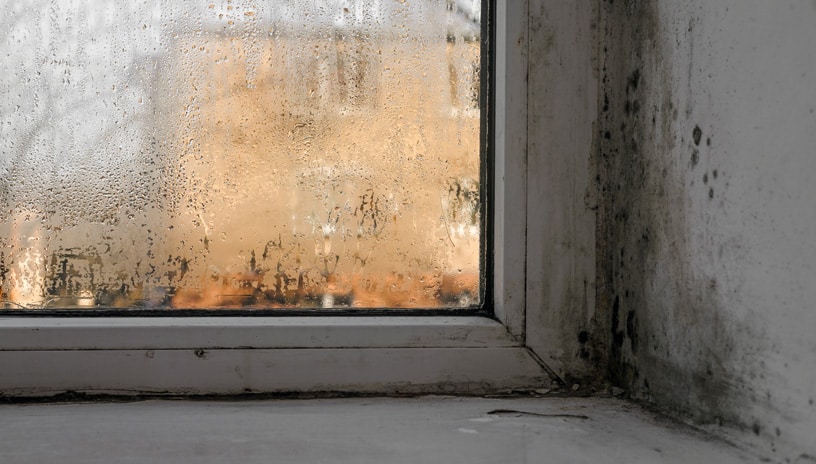Mold at Home: How to Address this Problem

Prevent mold growth for a healthier living space.
“April showers bring May flowers,” and occasionally, mold. In fact, mold growth is a relatively common nuisance anywhere warmer temperatures and a consistent level of humidity are present.
The Environmental Protection Agency offers a comprehensive guide on its website (www.epa.gov) titled "A Brief Guide to Mold, Moisture, and Your Home." The following is a summary of this resource.
Why Mold Grows Indoors
Mold is a natural part of the outdoor environment, helping to break down dead leaves and other organic matter. However, indoors, mold can damage your home and potentially impact your health.
Mold spores are everywhere—in the air inside and outside your home. Indoors, they begin to grow as soon as they land on a damp surface. Mold can grow on wood, drywall, carpet, fabric, and insulation—anyplace where moisture is present. Without water, mold can’t grow.
Health Risks of Exposure
Mold exposure doesn’t affect everyone the same way. However, it can cause:
- Sneezing, runny nose, and skin rashes.
- Red, itchy eyes and throat irritation.
- Asthma: Individuals with mold allergies are more susceptible to asthma attacks.
- Breathing issues in both allergic and non-allergic individuals.
People with asthma, mold allergies, or weakened immune systems are especially at risk. If you or a family member begins to experience symptoms and suspects mold exposure, consult a healthcare provider.
Mold Prevention Starts with Moisture Control
The best way to prevent mold-related damage to your home is to keep your living space clean and dry. Here are some effective steps:
- Fix plumbing leaks and water issues promptly.
- Clean and maintain gutters and drainpipes.
- Ensure the ground slopes away from your home’s foundation.
- Run exhaust fans when cooking, bathing, and doing laundry.
- Use dehumidifiers and air conditioners to keep indoor humidity between 30% and 50%.
- Dry wet areas within 24–48 hours to prevent mold growth.
If you notice condensation on walls or windows, take immediate action to dry the area and reduce moisture levels. Mold damages what it grows on. The longer it grows, the more damage it can cause.
Cleaning Up Safely
If the mold-affected area is smaller than 10 square feet (about a 3x3-foot area), you can clean it yourself. Take the following steps:
- Scrub hard surfaces with soap and water, then dry completely.
- Discard moldy, porous materials such as carpet, ceiling tiles, or fabric that cannot be cleaned.
- Do not paint or caulk over mold—remove it first and let the area dry.
It’s important to take precautions to limit your exposure to mold and mold spores. Wear gloves, goggles, and an N95 respirator mask to reduce your exposure while cleaning.
When Should You Call a Professional?
You should hire a qualified mold remediation professional if:
- The mold covers an area of more than 10 square feet.
- The moisture problem has caused extensive damage.
- You suspect hidden mold behind walls, ceilings, or under floors.
- Mold is growing in your HVAC system.
- Contaminated water (such as sewage) caused the issue.
Always verify references and ensure that contractors follow EPA guidelines for mold cleanup prior to hiring them.
Mold Problems: Final Thoughts
If you rent your living space, report plumbing and other leaks and moisture problems to your landlord or property manager immediately.
If mold is a problem in your home, act quickly. Remove the mold and eliminate the moisture source, or the mold will return.
Additional information on mold and how to manage it can be found online by visiting the Centers for Disease Control and Prevention (CDC) or contacting your local health department. Moultrie County residents can contact the Moultrie County Health Department at (217) 728-4114 for more information.

